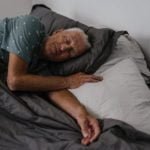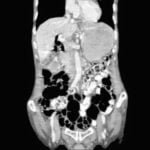
Top tips for Healthy Bones.
As we age, our bones become thinner and lose their density. Over time, one become more prone to injury, fractures etc.
Fortunately, you can take steps to halt the “thinning” of your bones, called osteopenia, and prevent osteoporosis.
1. Eat calcium-rich foods : Take a balanced diet .Choose fish with bones such as salmon, sardines . For additional benefits, serve them with a side of dark leafy green vegetables or broccoli. Almonds, dried figs, and soy milk are also calcium-rich choices.

2. Take calcium supplements
The U.S. recommended daily allowance for calcium is 1,000 mg a day during your 20s, 30s and 40s. But our need rises as we age.
Check with your doctor before starting supplements to find out what amount is right for you. For example, after menopause, most women need 1000 to 1,500 mg a day unless they take hormone therapy. A word of caution our body only absorbs 500 mg of calcium at a time so we must spread our consumption of calcium intake. Over use of calcium with its side effects is not unheard , please follow your doctor.
3. Add D to your day (Vitamin D)
To help absorb calcium, most adults need 1,000 to 2,000 IU of vitamin D daily.Combined calcium-vitamin D pills usually do not meet this requirement. Taking a vitamin D supplement will ensure you meet your daily needs. Again word of caution please do not take Vitamin D in excess , it is unsafe .Consult your doctor before taking Vitamin D supplementation
Be in sunshine for a while in the morning and in the afternoon.
4. Start weight-bearing exercises
To boost your bone strength, try exercise that “loads” or compresses your bones.Running, jogging, high-impact aerobics, repetitive stair climbing, tennis and basketball are best for building bones. But if you have osteopenia, osteoporosis or arthritis, try walking or using an elliptical or other machine. Be sure to clear any exercise plans with your doctor first. Join a Gym and follow exercise protocols.
5. Don’t smoke, and don’t drink excessively
Bad news for bad habits: Loss of bone mineral density is associated with tobacco use and excessive alcohol consumption. If you smoke, look into a program to help you quit. Do not drink alcohol , join a de addiction program.
6. Get your bone mineral density tested
Doctors can get a quick and painless “snapshot” of bone health using a simple X-ray test called DXA. This test measures bone mineral density and helps determine risks of osteoporosis and fracture. Women within two years of menopause may get it done. Earlier tests are recommended for men and women with certain diseases and for those taking medications that increase risk, such as long-term steroid therapy.
7. Consider medication
Perimenopausal women may consider hormone therapy to increase waning estrogen levels, which are linked to bone loss. And women and men diagnosed with osteopenia or osteoporosis can take various medications to prevent dangerous hip and spine fractures. Talk to your doctor about options such as bisphosphonates, teriparatide or denosumab.
To conclude , take a calcium rich diet , be in sunshine and exercise regularly to prevent bone loss and it s complications .
References :
- Sale C, Elliott-Sale KJ. Nutrition and Athlete Bone Health. Sports Med. 2019 Dec;49(Suppl 2):139-151. doi: 10.1007/s40279-019-01161-2. PMID: 31696454; PMCID: PMC6901417.
- Karlamangla AS, Burnett-Bowie SM, Crandall CJ. Bone Health During the Menopause Transition and Beyond. Obstet Gynecol Clin North Am. 2018 Dec;45(4):695-708. doi: 10.1016/j.ogc.2018.07.012. Epub 2018 Oct 25. PMID: 30401551; PMCID: PMC6226267.
Join the mailing list!
Get the latest articles delivered right to your inbox!




